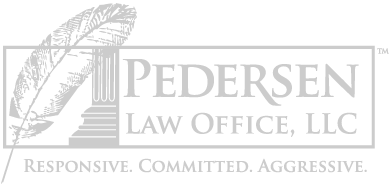Chapter 13 Bankruptcy
Chapter 13 Bankruptcy is an opportunity to save a home or vehicle that is in default. It is common for a person to fall behind on their home or auto loan due to a loss of income. Even after you regain employment, it is difficult to catch up on the loan in time to prevent a foreclosure or repossession. A Chapter 13 bankruptcy will stop foreclosure or repossession and allow you to take the amount you are behind and repay it over a 3 to 5 year period. A Chapter 13 Bankruptcy will also wipe out your unsecured debts such as medical bills, credit cards and payday loans.
Difference Between Chapter 7 and Chapter 13 Bankruptcy
Unlike a Chapter 7 Bankruptcy, a Chapter 13 Bankruptcy allows you to get caught up on secured debts you may be behind on such as a mortgage or an auto loan. Chapter 13 Bankruptcy may allow you to do a mortgage modification to reduce your monthly mortgage payment, and can even eliminate your second mortgage. While a Chapter 7 Bankruptcy takes approximately 120 days to complete, a Chapter 13 Bankruptcy is a three to five year repayment plan.
Requirements to Qualify for Chapter 13 Bankruptcy
You can take advantage of the benefits of a Chapter 13 if you have a regular source of income. This can be employment, retirement income, social security income or any other reliable source. You also need to show you can afford your regular monthly expenses in addition to your Chapter 13 payment.
The Process for a Chapter 13 Bankruptcy
Preparation. The first step toward a Chapter 13 Bankruptcy is meeting with an attorney for a consultation. The attorney will discuss your financial struggles and help create obtainable goals to protect your assets. If you decide that Chapter 13 Bankruptcy is right for you, a list of paperwork will be provided for you to bring to your next appointment. At your second appointment, the attorney will go through all the necessary information with you to prepare the bankruptcy case.
Filing Bankruptcy. When the bankruptcy case is ready, you will review the paperwork with your attorney and sign the petition and schedules. The papers will be filed with the bankruptcy court that same day. Roughly 30 days later there will be a court hearing where you will swear under oath that your bankruptcy paperwork is true and correct and answer any questions the trustee has. Usually this is the only hearing required.
Chapter 13 Plan. Your first Chapter 13 Plan payment is due within 30 days of filing your case. Once the first payment has been made, the remaining payments can be made by mail or direct withdrawal from your pay check. Assuming nothing changes, you will continue to make your payments until you have reached the end of your plan, at which time you will receive your discharge of debts.
Unexpected Changes. Unfortunately, problems can happen during the three to five year repayment program of a Chapter 13 bankruptcy. You could lose your job, suffer an injury, or have some other issue that prevents you from being able to pay your Chapter 13 payment. When these things happen your attorney will discuss the issue with you and how to proceed. You will decide if the Chapter 13 should be amended to deal with the issue, if you should dismiss your Chapter 13 case, or if you should convert your Chapter 13 to a Chapter 7. Even though you are in a 3 to 5 year plan, you still have options available if something happens.
Pedersen Law Office, LLC offers free consults in all of our areas of practice and will meet with you personally to discuss your specific circumstances and see what options are available for you. Our law office serves the communities of Appleton, Neenah, Menasha, Oshkosh, Green Bay and their surrounding areas.
